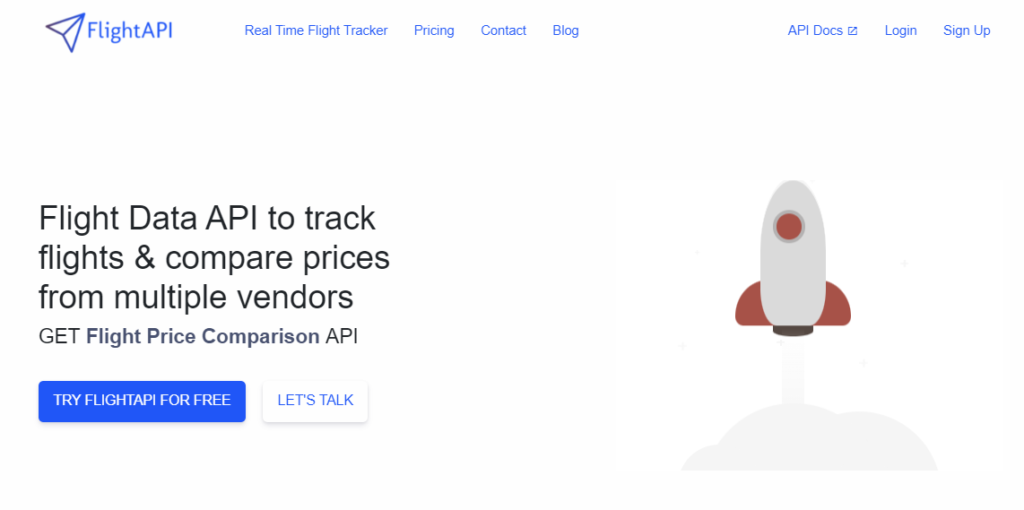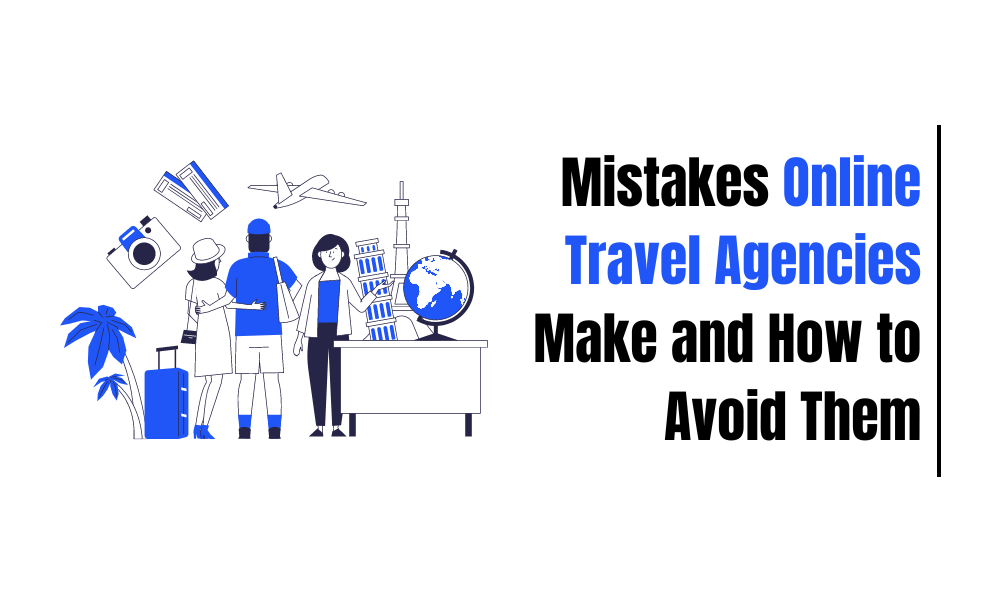10 Mistakes Online Travel Agencies Make and How to Avoid Them
Standing out is crucial in the competitive world of online travel agencies (OTAs), where 589,000 travel agencies are fighting for attention (Statista, Feb 2024).
Even small mistakes can knock an OTA out of the competition.
We’re not scaring you, it’s the hard truth.
Every day, these agencies have to precisely nail their customer’s needs. Because they know a single slip-up can turn a customer away for good.
So, let’s get straight to the point.
Whether you’re running a seasoned agency or just starting out, avoiding common errors is as important as getting things right.
Here’s a look at the top 10 mistakes online travel agencies make and how you can steer clear of them to keep your customers happy and your business thriving.
1. Lack of Personalization
One common mistake travel agencies make is neglecting personalization.
Many still offer standardized travel packages and assume what works for one traveller will suffice for another. This approach is outdated. According to a report published on data art. 65% of customers expect personalized experiences and 82% are willing to share personal information for better-tailored services.
To avoid this mistake, agencies should embrace data analytics and machine learning. These tools help understand individual preferences and past behaviors which allows agencies to craft unique travel experiences.
For example, if data shows a customer enjoys secluded beach destinations, agencies can suggest a quiet island retreat rather than a popular, crowded beach.
In essence, personalization is crucial for travel agencies. It not only enhances customer satisfaction but also builds loyalty and differentiates one agency from another in a competitive market. Without it, agencies risk losing relevance and customer interest.
2. Not Offering Comprehensive Travel Services
Customers today expect travel agencies to be a one-stop shop for all their travel needs. When agencies fail to offer a full suite of services, they risk losing clients to more comprehensive providers.
To avoid this pitfall, you can integrate travel APIs. These APIs enable your platform to offer a wide range of services, including flight & hotel price comparison, flight & accommodations booking, car rentals, tours, activities, travel insurance, concierge services, and sustainable travel options.
By integrating these travel APIs, your agency can meet all your client’s needs and provide them with the convenience and comprehensive support they seek.
For example, integrating a flight price API, helps you gain access to the real-time flight price comparison data which allows you to offer your customers the best deals. This ensures your clients get the most accurate and up-to-date prices that boost customer satisfaction and loyalty.
Happy customers are likely to keep coming back for more and refer their friends to help them get better offers while planning a trip.

This approach not only enhances customer satisfaction but also builds loyalty and encourages repeat business.
3. Poor Website Design and User Experience
A poorly designed website can frustrate users and drive them away. Imagine clicking on a website that takes forever to load or doesn’t look right on your phone. Annoying, right?
You’re not alone.
According to an article published on, Think With Google.
Between 48% of users feel the same about bad mobile optimization.
And, 52% of users are less likely to engage with a company that doesn’t use responsive mobile design.
More shockingly, 53% of mobile site visitors leave a page that takes more than three seconds to load. T
That’s a lot of potential customers lost in just a few seconds!
So, how can you avoid this pitfall? Invest in professional web design that focuses on simplicity, speed, and mobile responsiveness. A clean, fast, and user-friendly website keeps visitors engaged and more likely to become loyal customers. For those looking to streamline this process, consider using an AI website builder that optimizes these critical elements automatically.
Is your website driving people away? It might be time for a redesign.
4. Information Overload
Ever felt overwhelmed by too much information? You’re not alone. Many travel agencies make the mistake of bombarding customers with endless details. Instead of helping, this can actually drive people away.
To avoid this, present information in a clear, organized manner. Use icons, filters, and categorization to make it easy for users to find what they need. This way, you turn a chaotic sea of data into a smooth sailing experience.
Imagine visiting a site where everything is neatly arranged, and you can quickly find the best deals. Wouldn’t that make planning your trip more enjoyable?
So, Simplify your content to make your customer satisfaction soar.
5. Ineffective Calls-to-Action (CTAs)
Unclear or poorly timed calls-to-action (CTAs) can significantly reduce conversions. Imagine you’re on a website, ready to make a purchase, but you can’t find the “Buy Now” button or it’s buried at the bottom of the page. Frustrating, right?
To avoid this, design distinct and strategically placed CTAs that guide the user seamlessly through the booking process. Customized CTAs are known to convert 42% more visitors. This means that a well-designed, personalized CTA can be the difference between a lost visitor and a loyal customer.
So, how do you create effective CTAs? First, make them stand out. Use contrasting colors and clear, concise text. Phrases like “Book Now” or “Get Started” are direct and actionable.
Next, place them strategically. Don’t hide them at the bottom of the page; instead, position them where the user is most likely to take action, like after a compelling product description or testimonial.
Want to know more about common CTA mistakes, click here.
Well, this is another example of a perfect CTA which is helpful for your audience.
If your CTAs aren’t leading your customers down the right path, it’s time to resign CTAs that convert.
6. Ignoring Explorers and Inspiration Seekers
Ever browsed travel websites without a clear destination in mind, just seeking some inspiration? Many users are in this exploration phase, looking for ideas and guidance. Ignoring these explorers can mean missing out on potential customers.
To attract and engage these travellers, provide tools and content that spark their imagination. Travel guides, recommendation tools, and inspiring blog posts can be incredibly helpful. Showcasing beautiful destinations, sharing travel itineraries, and highlighting unique experiences can guide undecided travellers and turn them into excited bookers.
Think about it – wouldn’t you be more likely to book a trip after reading an inspiring guide on hidden gems in Italy or a blog post about must-see sights in Japan?
Don’t miss out on inspiring your potential customers. Help them dream, and they’ll choose you to make those dreams come true.
7. Poor Customer Service and Support
Inefficient customer service can lead to dissatisfaction and negative reviews. And the impact is huge – 81% of customers say a positive service experience increases their likelihood of making another purchase.
To avoid this pitfall, it’s crucial to implement a solid customer service strategy. This means having live chat options, clear instructions, and prompt responses. Consumers often switch to a competitor after just one bad experience. That’s why every interaction matters.
For an example, picture this: A customer reaches out with an issue. They’re frustrated and looking for help. A quick, helpful response not only solves their problem but also builds loyalty. On the flip side, a poor interaction can turn them away for good.
Incorporate these strategies into your business to keep your customers happy and coming back for more. After all, great customer service isn’t just a nice-to-have but essential for success.
8. Not Keeping Up with Technology
Technology evolves rapidly, and failing to adapt can leave you behind.
To stay ahead, it’s crucial to keep up with the latest technology trends. Integrate cloud-based systems and real-time booking tools to streamline your operations. These solutions not only enhance efficiency but also improve customer satisfaction.
After all, who doesn’t prefer a service that offers instant bookings and seamless transactions? By adopting new technologies, you can provide a better experience for your customers and stay competitive in the market.
9. Inadequate Online Presence and Marketing
Ever searched for a company online and found no information? Feels like a major red flag.
A weak online presence can seriously limit your reach and engagement. Because, more than 90% of travellers do their research online, and 82% complete their bookings online. If your digital footprint is lacking, you’re missing out on a massive audience.
To avoid this pitfall, you can develop a robust social media strategy, keep an engaging blog, and optimize your website for search engines. Social media is where your potential customers are hanging out. Engage them with stunning photos, travel tips, and stories that inspire. Your blog should be a treasure trove of useful information that helps travellers plan their next adventure.
10. Overlooking Legal and Compliance Issues
Legal troubles can be a nightmare for your business. Ignoring legal requirements is like walking a tightrope without a safety net.
Stay on top of all relevant laws and regulations to avoid falling into this trap. Make sure you have all the necessary licenses and keep them current. Plus, proper insurance coverage is also essential. it’s your lifeline in case things go wrong.
Conclusion:
Don’t let common pitfalls dim your OTA’s potential. Keep your eye on the ball, continuously refining your strategies to stay ahead. Remember, in the online travel agency business, being complacent can mean falling behind.
Stay curious, keep adapting, and always aim to exceed traveller expectations.
Turn those insights into actions and keep the bookings coming!

